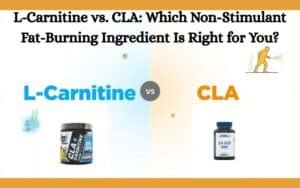Can I Take Omega 3 with Milk? The Real Answer Explained
If you’ve ever stared at your omega-3 capsule and wondered whether to swallow it with a glass of milk or water, you’re not alone. Many people search for this because they want to make sure their supplement works effectively and doesn’t upset their stomach. Omega-3 fatty acids are among the most popular supplements globally, yet confusion about how and when to take them is surprisingly common. The simple answer is yes, you can take omega-3 with milk — and in many cases, it’s actually a smart choice. But to understand why, let’s unpack what happens when you pair these two together.
Understanding How Omega-3 Works in the Body
Omega-3 fatty acids, found in fish oil and plant-based sources like flaxseed oil, are essential fats that the body cannot make on its own. They play a key role in brain function, inflammation control, heart health, and even skin nourishment. However, their effectiveness largely depends on how well your body absorbs them.
Unlike water-soluble vitamins, omega-3 is fat-soluble, meaning it dissolves and gets absorbed in the presence of fat. If you take omega-3 on an empty stomach or with plain water, much of it may pass through your digestive system without being fully absorbed. That’s why experts often recommend taking it with a meal containing healthy fats — and milk naturally fits this role. For better understanding of the right dosage and composition, you can look at premium products like Zoomad Labs Omega-3 that contain high-quality EPA and DHA, ensuring better results when taken with food.

Why Taking Omega-3 with Milk Makes Sense
Milk, particularly whole or low-fat milk, contains both fats and proteins, which can significantly improve the bioavailability of omega-3. When consumed together, the fats in milk help emulsify the oil from omega-3 supplements, making it easier for the intestines to absorb the nutrients.
This combination also helps buffer the supplement in the stomach. Many people experience nausea, bloating, or a fishy aftertaste after taking omega-3 on an empty stomach. Milk helps neutralize stomach acid and reduces these side effects, offering a smoother digestion experience.
Another benefit is convenience. For many people, milk is already part of their morning or evening routine — whether in cereal, tea, coffee, or shakes. Taking omega-3 with milk fits seamlessly into that habit, ensuring consistency, which is key for supplements to show results. If you’re trying to make it a part of your wellness plan, you can read how to integrate omega-3 effectively through your meals and workouts in this daily routine guide.
Is It Safe to Mix Omega-3 Directly into Milk?

Some users like to mix liquid omega-3 oil or open capsules into milk or smoothies. This is generally safe, provided the milk is cold or at room temperature. Hot milk can degrade the delicate fatty acids, reducing their potency. If you enjoy smoothies, blending omega-3 oil into a milk-based shake is an excellent option. Just make sure to drink it fresh, as omega-3 oxidizes quickly when exposed to air.
Adding fruits like bananas or oats to your shake can enhance taste and provide slow-release carbohydrates, making it a great post-breakfast or pre-lunch combination. For people who want to target heart and cholesterol health, combining omega-3 with a milk-based diet can be supportive, as discussed in this article about omega-3 for cholesterol control.
Skim, Low-Fat, or Whole Milk: Which Is Best?
Since omega-3 is fat-soluble, a small amount of fat is required for optimal absorption. Whole milk naturally provides around 3–4% fat, making it the best choice. Low-fat milk also works fine, but completely skimmed milk may reduce absorption slightly.
That said, the difference isn’t huge if you consume other sources of fat in your meal, like nuts, eggs, or avocado. The key is ensuring some fat is present in your digestive process when omega-3 is taken. You can also explore the best omega-3 supplements in Pakistan to ensure you’re using products that are formulated for better absorption and bioavailability.
What About Plant-Based or Lactose-Free Milk?
If you’re lactose-intolerant or follow a vegan diet, you can still get the same benefit from plant-based milks such as almond, soy, or oat milk. Just make sure to pick versions with added healthy fats or calcium. Many fortified plant milks even include omega-3 themselves, making the combination nutritionally complementary.
Soy milk, in particular, contains natural fats and proteins similar to dairy milk, so it supports absorption effectively. Coconut milk is another excellent pairing due to its medium-chain triglycerides (MCTs), which enhance the body’s fat digestion process.
When Is the Best Time to Take Omega-3 with Milk?

The best time to take omega-3 with milk is during or immediately after a meal. Morning breakfast or evening dinner is ideal because your body is already digesting other nutrients, allowing better absorption.
Taking omega-3 before bed with milk can also help those who dislike the fishy taste, as sleeping through digestion minimizes any aftertaste. Just avoid taking it completely on an empty stomach. People using omega-3 alongside multivitamins can also safely combine both; this article explains how omega-3 interacts with multivitamins without affecting their absorption.
Common Myths About Taking Omega-3 with Milk
One common misconception is that milk’s calcium content may block the absorption of omega-3. This is false. Calcium primarily interacts with certain minerals, not fats. Another myth is that combining dairy with supplements causes nutrient clashes — again, not true in this case. Milk acts as a carrier, not a competitor.
However, what does reduce omega-3 quality is heat and light exposure. So if you use milk in tea or coffee, take your supplement separately instead of mixing it into the drink. Regular intake of omega-3 can also help with liver health, and if you’re interested in how it supports reducing inflammation, this detailed piece on omega-3 and liver fat provides valuable insights.
How to Make It a Part of Your Daily Routine
Consistency is what makes omega-3 truly effective. Try pairing it with your morning cereal and milk, or add it to your evening milkshake. If you already take other supplements like vitamin D, it’s perfectly fine to take them together, as both are fat-soluble and benefit from the same absorption process.
If you’re into fitness or muscle recovery, mixing omega-3 with a protein shake made from milk can also be beneficial. The protein helps repair tissues, while omega-3 helps reduce inflammation, creating a synergistic effect. Those who prefer premium formulations can check detailed product reviews like Zoomad Labs Omega-3 review before choosing the right supplement for their goals.
To ensure you’re getting a certified and authentic product, browse through SportsOne’s curated omega-3 category, which features leading brands formulated for better purity and absorption.
Quick Clarifications about Taking Omega-3 with Milk
-
No. Calcium primarily affects the uptake of certain minerals, not fats. Omega-3 is fat-soluble and pairs well with foods that contain some fat. For product options that emphasize EPA and DHA purity suited to meal-time use with milk, review popular omega-3 choices in Pakistan.
-
Avoid heat. High temperature can degrade delicate fatty acids. If you prefer a shake, keep it cold. For goals like supporting cholesterol management as part of a meal routine, see practical context in omega-3 for cholesterol control.
-
Yes. Soy, almond, and oat milks that include some fat are supportive. If you are pairing omega-3 with a multivitamin during breakfast, timing guidance is outlined in taking omega-3 with multivitamins.
-
Choose a certified, high-purity EPA and DHA source. Users who prefer a capsule format that sits well with food often consider Zoomad Labs Omega-3. For a deeper breakdown of this formula, see the hands-on review, and if you are mapping options across brands, the overview in best omega-3 supplement picks in Pakistan is helpful.
-
Take omega-3 during or right after a meal that contains some fat. A milk-based smoothie or cereal works well. A step-by-step approach is outlined in adding omega-3 to your daily routine. If inflammation and liver health are part of your goals, additional reading in omega-3, liver fat, and inflammation adds context.
-
If you are still exploring formulations and price ranges before pairing with milk, scan the up-to-date options in the category view at omega-3 supplements in Pakistan.
Final Thoughts
Taking omega-3 with milk is not only safe but can enhance the supplement’s absorption and reduce discomfort. The fat in milk helps the body absorb omega-3 more effectively, while the protein and calcium contribute to overall nutrition. Whether you’re using dairy or plant-based milk, the key is pairing your omega-3 with a nutrient-rich base that supports its solubility.








Add comment
You must be logged in to post a comment.